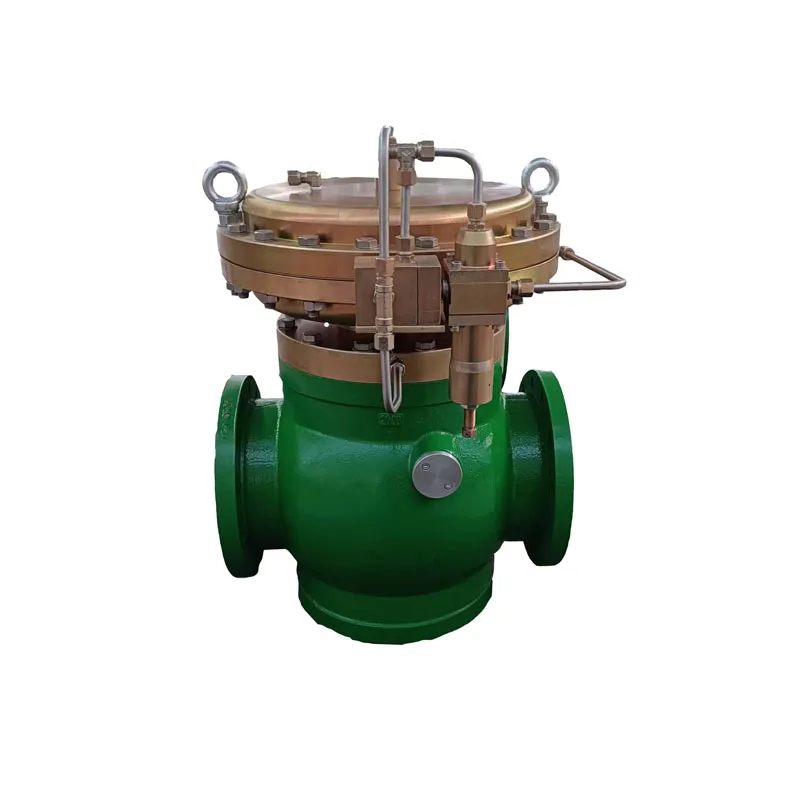
Dec . 09, 2024 17:33
Back to list
Understanding the Functionality and Importance of Pressure Regulation Devices in Various Applications
Understanding Pressure Regulating Devices Ensuring Safety and Efficiency
Pressure regulating devices play a crucial role in various industries by controlling and stabilizing the pressure of gases and liquids within a system. These devices are essential for maintaining operational efficiency and ensuring safety, preventing overpressure situations that could result in equipment failure or accidents.
What is a Pressure Regulating Device?
A pressure regulating device is a mechanical system designed to automatically control the pressure of a fluid to a predetermined level. This is achieved through a combination of sensors and actuators that respond to changes in pressure, allowing the device to adjust flow rates accordingly. Common examples of pressure regulating devices include pressure relief valves, pressure reducing valves, and pressure control valves.
Applications Across Industries
Pressure regulating devices are widely used in various sectors, including
1. Oil and Gas In the oil and gas industry, these devices are critical for managing the pressure of gas pipelines. They help ensure that the pressure remains within safe limits, preventing leaks or ruptures that could have catastrophic consequences.
2. Water Supply Systems Water supply networks often utilize pressure regulating devices to maintain stable water pressure for consumers. This prevents water hammer, which can cause pipe damage and lead to costly repairs.
3. HVAC Systems In heating, ventilation, and air conditioning (HVAC) systems, pressure regulators are used to control the pressure of refrigerants and maintain optimal performance while enhancing energy efficiency.
4. Manufacturing Many manufacturing processes require precise pressure control to ensure product quality. Pressure regulating devices help maintain the correct conditions for processes such as painting, coating, and molding.
pressure regulating device

5. Medical Devices In healthcare, devices like oxygen regulators are used to ensure that the pressure of gases delivered to patients is safe and comfortable. These devices are crucial in emergency medical situations, where precision is vital.
Benefits of Using Pressure Regulating Devices
The deployment of pressure regulating devices offers numerous advantages
- Safety The primary benefit of pressure regulators is safety. By controlling and limiting pressure, these devices prevent the risk of explosions, leaks, and other dangerous scenarios.
- Efficiency Maintaining optimal pressure levels enhances the efficiency of systems. For example, in HVAC systems, proper pressure regulation can lead to lower energy consumption and reduced operational costs.
- Equipment Longevity Fluctuating pressures can cause wear and tear on equipment. By stabilizing pressure, these devices help extend the lifespan of machinery and reduce maintenance costs.
- Improved Performance Pressure regulation ensures that systems operate under the right conditions. This consistency can lead to better product outcomes in manufacturing processes and improved patient care in medical settings.
Conclusion
In summary, pressure regulating devices are vital components in various industries, ensuring safety, efficiency, and reliability. By controlling the pressure of gases and liquids, they protect both equipment and personnel from potential hazards associated with overpressure or fluctuating pressure levels. As technology advances, the design and functionality of these devices continue to evolve, promising even greater precision and effectiveness in adapting to diverse applications. With the increasing demand for safety and efficiency in industrial processes, the importance of pressure regulating devices is set to grow, making them indispensable in modern engineering and technology.
Latest news
-
Safety Valve Spring-Loaded Design Overpressure ProtectionNewsJul.25,2025
-
Precision Voltage Regulator AC5 Accuracy Grade PerformanceNewsJul.25,2025
-
Natural Gas Pressure Regulating Skid Industrial Pipeline ApplicationsNewsJul.25,2025
-
Natural Gas Filter Stainless Steel Mesh Element DesignNewsJul.25,2025
-
Gas Pressure Regulator Valve Direct-Acting Spring-Loaded DesignNewsJul.25,2025
-
Decompression Equipment Multi-Stage Heat Exchange System DesignNewsJul.25,2025

